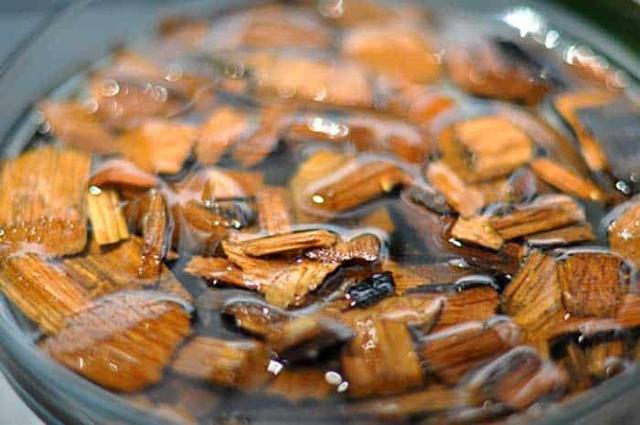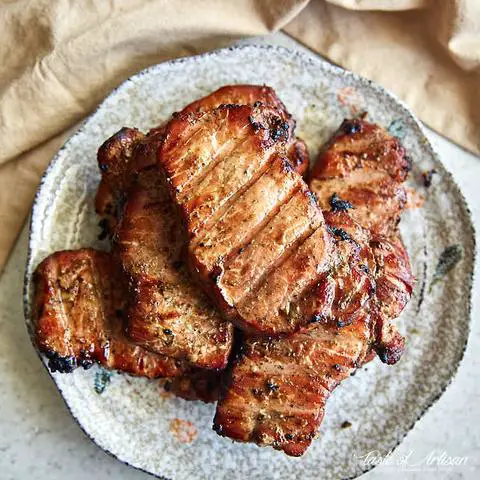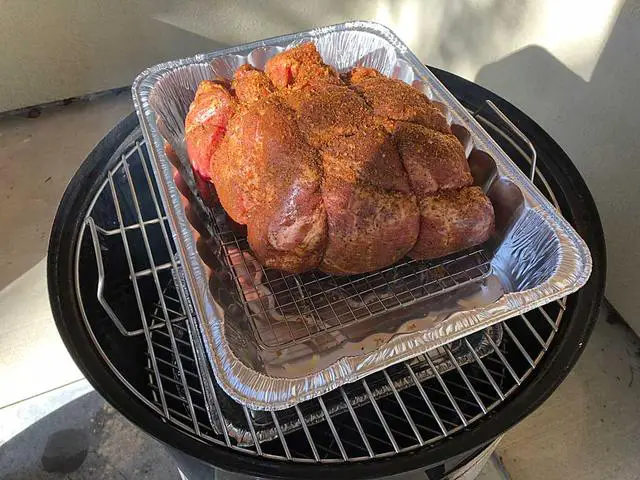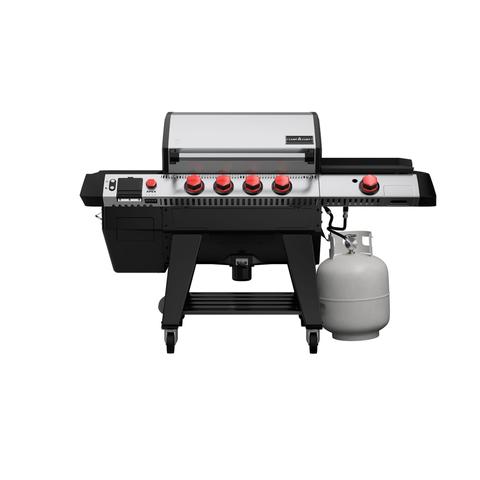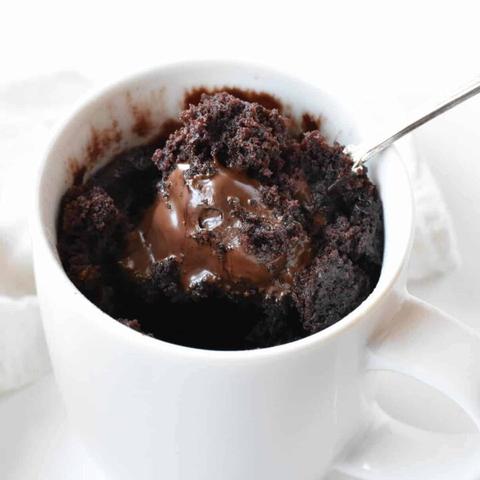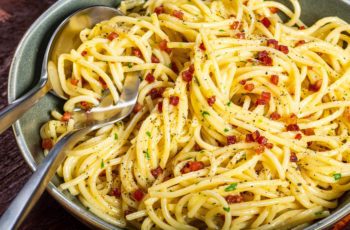
When it comes time to cook spaghetti, the big question is always how long to boil spaghetti. Many people tend to overcook pasta, resulting in a mushy consistency.
Besides, anyone who has ever cooked spaghetti knows that it can be a little bit tricky to get just the right level of doneness. Different cooks have different opinions on how long to boil spaghetti in order to achieve the perfect texture, so it can be tough to know what is the right approach for you. In this blog post, we will take a look at some of the most popular techniques for boiling spaghetti, and help you determine which one is right for you.
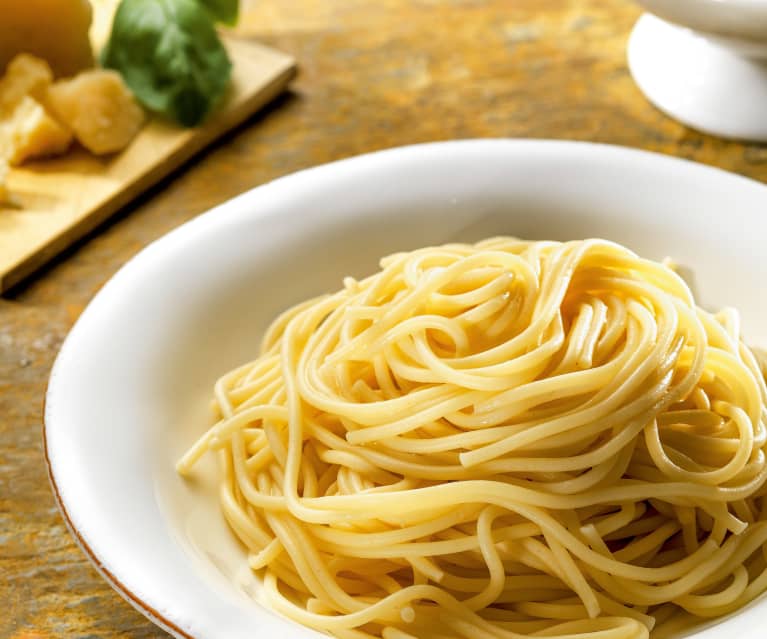
What is spaghetti?
Spaghetti is a long, thin type of pasta that is made from durum wheat. It is commonly used in Italian cuisine and is one of the most popular types of pasta in the world. Spaghetti can be served with a variety of different sauces, or it can be cooked in broth as a soup.
Benefits of spaghetti:
– Spaghetti is a good source of complex carbohydrates, which are an important type of energy for the body.
– Spaghetti is a good source of fiber, which can help to promote regularity and keep you feeling full.
– Spaghetti is a good source of iron, which is necessary for carrying oxygen in the blood.
How to Boil Spaghetti?
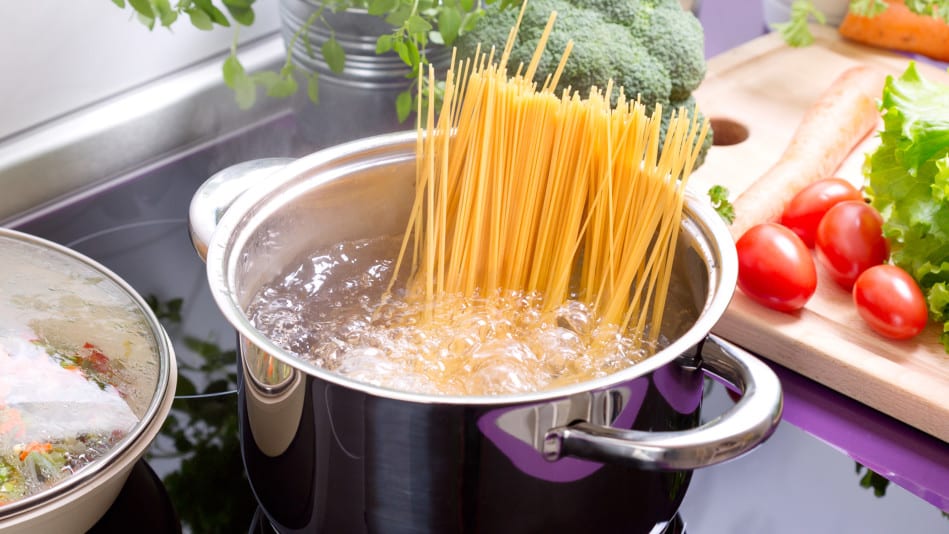
There are a few different methods that you can use to boil spaghetti. The method that you choose will depend on your personal preferences and how much time you have to cook.
The first method is the traditional way to boil spaghetti. In this method, you will need to bring a pot of water to a boil before adding the pasta. Once the water has reached a rolling boil, you can add the spaghetti and allow it to cook for the amount of time specified on the package. After the pasta has cooked, you will need to drain it in a colander.
The second method is the quick boil method. In this method, you will bring a small amount of water to a boil in a pot before adding the spaghetti. Once the water has come to a boil, you will add the pasta and turn off the heat. Allow the paste to sit in the hot water for about 10 minutes before draining it in a colander.
The third method is the baked spaghetti method. In this method, you will need to preheat your oven to 350 degrees Fahrenheit before cooking the spaghetti. To cook the pasta, you will need to bring a pot of water to a boil and then cook the spaghetti for about 2 minutes. After the pasta has cooked, you will need to drain it in a colander. Then, you will add the pasta to a baking dish and cover it with your favorite sauce. Bake the spaghetti in the oven for about 20 minutes, or until it is heated through.
Which method should you use?
The method that you choose to use to boil spaghetti will depend on your personal preferences. If you want traditional boiled spaghetti, then you should use the first method. If you are looking for a quick and easy way to cook spaghetti, then you should use the second method. If you want baked spaghetti, then you should use the third method.
How to cook spaghetti for the best flavor?
The perfect spaghetti should be cooked al dente, which means “to the tooth” in Italian. This term refers to the ideal texture of pasta, which is slightly firm to the bite. Undercooked spaghetti will be too soft and overcooked spaghetti will be too hard. The best way to achieve perfectly cooked spaghetti is to taste it frequently while it is cooking so that you can gauge the level of doneness.

In order to cook spaghetti al dente, you will need to bring a pot of water to a boil before adding the pasta. Once the water has reached a rolling boil, you can add the spaghetti and allow it to cook for the amount of time specified on the package. After the pasta has cooked, you will need to drain it in a colander.
If you want to achieve the perfect level of doneness, it is important to not overcook the spaghetti. Overcooked spaghetti will be mushy and lack flavor. To avoid overcooking the pasta, be sure to taste it frequently while it is cooking so that you can gauge the level of doneness. Once the pasta has reached the desired level of doneness, you can drain it in a colander.
When cooking spaghetti, it is important to use a pot that is large enough to accommodate the amount of pasta that you are cooking. If you try to cook too much pasta in a small pot, then the water will not be able to circulate properly and the pasta will not cook evenly. As a result, some of the pasta will be overcooked while other pieces will be undercooked. To avoid this problem, be sure to use a pot that is large enough to comfortably accommodate the amount of pasta that you are cooking.
Another important tip for cooking spaghetti is to stir it occasionally while it is boiling so that it doesn’t stick together. If the pasta sticks together, then it will be difficult to achieve an even cook. To prevent the pasta from sticking together, be sure to stir it occasionally while it is boiling.
Finally, be sure to taste the spaghetti before draining it to make sure that it is cooked to your liking. By tasting the pasta frequently while it is cooking, you can gauge the level of doneness and avoid overcooking the pasta.
How to stop spaghetti from sticking?
If you are having trouble with your spaghetti sticking together, then there are a few things that you can do to prevent this from happening. First, be sure to use a pot that is large enough to accommodate the amount of pasta that you are cooking. Second, be sure to stir the pasta occasionally while it is boiling so that it doesn’t stick together. Finally, be sure to taste the pasta before draining it to make sure that it is cooked to your liking. By following these tips, you should be able to cook perfectly delicious spaghetti without any sticking problems.

What kind of spaghetti should I use?
There are many different types of spaghetti available on the market, so it can be difficult to decide which one to use. The type of spaghetti that you use will ultimately depend on your personal preferences. If you are looking for traditional spaghetti, then you should use semolina pasta. If you are looking for a healthier option, then you should use whole wheat pasta. Ultimately, the decision of which type of spaghetti to use is up to you.
How to cook spaghetti al dente?
The best way to achieve perfectly cooked spaghetti is to taste it frequently while it is cooking so that you can gauge the level of doneness. Undercooked spaghetti will be too soft and overcooked spaghetti will be too hard. In order to cook spaghetti al dente, you will need to bring a pot of water to a boil before adding the pasta. Once the water has reached a rolling boil, you can add the spaghetti and allow it to cook for the amount of time specified on the package. After the pasta has cooked, you will need to drain it in a colander.
What kind of sauce goes with spaghetti?
There are many different types of sauces that go well with spaghetti. Some popular options include marinara sauce, Alfredo sauce, and meat sauce. Ultimately, the decision of which sauce to use is up to you. If you are unsure of which sauce to use, then you can always ask your local Italian restaurant for their recommendation.
Perfectly cooked spaghetti recipe:
Ingredients:
-1 pound spaghetti
-1 tablespoon olive oil
-1 onion, diced
-4 cloves garlic, minced
-2 tablespoons tomato paste
-1 (28 ounces) can of crushed tomatoes
-1 teaspoon sugar
-1 teaspoon dried basil leaves
-1/2 teaspoon salt
-1/4 teaspoon black pepper
-1/4 cup chopped parsley
Directions:
- Bring a large pot of water to a boil and add the spaghetti. Cook the pasta according to the package instructions. Drain the spaghetti in a colander.
- Heat the olive oil in a large saucepan over medium heat. Add the onion and garlic and cook until the onion is translucent.
- Stir in the tomato paste and cook for 1 minute. Add the crushed tomatoes, sugar, basil, salt, and pepper. Bring the sauce to a simmer and cook for 10 minutes.
- Add the cooked spaghetti to the sauce and toss to combine. Serve with chopped parsley. enjoy!
How Long For Al Dente Spaghetti?
The al dente stage of spaghetti is when the pasta is cooked through but still has a bit of a bite to it. This stage of doneness is typically reached after about 8-10 minutes of cooking. To test if your spaghetti is al dente, simply remove a strand of pasta from the pot and taste it. If the pasta is cooked to your liking, then it is ready to be served. If not, then you can continue cooking it for a few more minutes until it reaches the perfect level of doneness.

Does Fresh Spaghetti Need Less Time To Cook?
Fresh pasta will generally cook faster than dried pasta since it doesn’t need to be rehydrated. However, the cooking time for fresh spaghetti will vary depending on the thickness of the noodles. For example, thinner noodles like angel hair pasta will only need to cook for 2-3 minutes, while thicker noodles like fettuccine will need to cook for 4-5 minutes. Ultimately, the best way to know when your pasta is cooked is to taste it frequently while it is boiling.
What To Do If Spaghetti Sticks Together?
If your spaghetti starts to stick together while it is cooking, there are a few things that you can do in order to fix the problem. First, make sure that you are using enough water. If the pot of water is too small, then the pasta will have a tendency to stick together. Second, make sure that you are stirring the pasta occasionally so that it doesn’t have a chance to stick together. Finally, if your spaghetti does end up sticking together, then you can try running it under cold water for a few seconds. This will help to separate the strands of pasta.
How To Keep Spaghetti Warm?
If you need to keep your spaghetti warm for an extended period of time, there are a few different methods that you can use. One option is to place the cooked spaghetti in a slow cooker in a warm setting. Another option is to place the cooked spaghetti in an oven-safe dish and keep it in a turned-off oven with the door cracked open. Finally, if you are serving the spaghetti right away, you can simply keep it in the pot that you cooked it in and place a lid on top of the pot.
How To Reheat Spaghetti?
There are a few different ways that you can reheat spaghetti. One option is to place the spaghetti in a microwave-safe dish and heat it in the microwave for 1-2 minutes. Another option is to place the spaghetti in a saucepan over low heat and cook it until it is warm throughout. Finally, if you are using an oven to reheat your spaghetti, you will want to bake it at a low temperature (250 degrees Fahrenheit) for 10-15 minutes.
Can You Freeze Spaghetti?
Yes, you can freeze spaghetti. To freeze cooked spaghetti, place it in a freezer-safe container and store it in the freezer for up to 3 months. When you are ready to eat the frozen spaghetti, simply thaw it in the refrigerator overnight and then reheat it according to your preferred method.
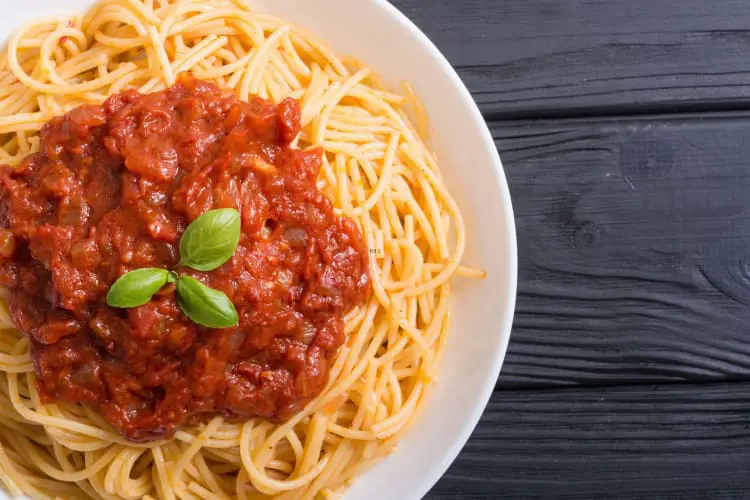
How Long Does Spaghetti Last In The Fridge?
Cooked spaghetti will last in the fridge for 3-5 days. To extend the shelf life of cooked spaghetti, make sure to store it in an airtight container. When stored properly, cooked spaghetti can also be frozen for up to 3 months.
Does Salt Speed Up The Cooking Time For Spaghetti?
No, salt does not speed up the cooking time for spaghetti. In fact, adding salt to the water can actually make it take longer for the water to come to a boil. However, once the water is boiling, the salt will help to season the pasta and make it more flavorful.
What Is The Best Way To Store Spaghetti?
The best way to store spaghetti is in an airtight container in the pantry. If you are planning on storing cooked spaghetti, make sure to place it in an airtight container in the fridge. Cooked spaghetti will last in the fridge for 3-5 days.
How Do You Know When Spaghetti Is Done?
The best way to know when spaghetti is done is to taste it frequently while it is boiling. You will want the pasta to be cooked all the way through, but you don’t want it to be overcooked. Once the spaghetti is cooked to your liking, simply drain it in a colander and then rinse it with cold water.
What Happens If Spaghetti Is Undercooked?
If spaghetti is undercooked, it will be very difficult to eat. The pasta will be hard and crunchy, and it will be very difficult to chew. If you are not sure if your spaghetti is cooked all the way through, it is always better to err on the side of caution and cook it for a few minutes longer.
What Happens If Spaghetti Is Overcooked?
If spaghetti is overcooked, it will be very mushy and soft. It will also be much more difficult to eat, as the pasta will fall apart easily. If you are not sure if your spaghetti is cooked all the way through, it is always better to err on the side of caution and cook it for a few minutes less.

Common mistakes in boiling spaghetti:
-Not using enough water:
If you don’t use enough water, the pasta will be overcooked and mushy.
-Not bringing the water to a boil before adding the pasta:
If you don’t bring the water to a boil first, the pasta will take longer to cook and it may not be cooked all the way through.
-Not stirring the pasta:
If you don’t stir the pasta occasionally, it will stick together and it will be difficult to eat.
-Overcrowding the pot:
If you overcrowd the pot, the pasta will take longer to cook and it may not be cooked all the way through.
-Adding oil to the water:
Adding oil to the water will prevent the pasta from sticking together, but it will also make it more difficult to eat.
-Not draining the pasta:
If you don’t drain the pasta, it will be very difficult to eat. The pasta will be hard and crunchy, and it will be very difficult to chew.
-Rinsing the pasta with cold water:
Rinsing the pasta with cold water will stop the cooking process and it may make the pasta more difficult to eat.

Factor to consider when boiling spaghetti:
-The type of pasta:
Different types of pasta will take different amounts of time to cook. Spaghetti will take about 10 minutes to cook, while angel hair pasta will only take about 5 minutes to cook.
-The size of the pot:
If you are using a large pot, it will take longer for the water to come to a boil.
-The number of people you are cooking for:
If you are cooking for a large group of people, you may need to cook more pasta than if you are only cooking for a few people.
-How hungry everyone is:
If everyone is very hungry, they may want to eat more than if they were not as hungry.
-How much sauce you are using:
If you are using a lot of sauce, it will take longer for the pasta to absorb the sauce and it may be more difficult to eat.
-How long do you want to cook the pasta:
If you want to cook the pasta for a shorter amount of time, it is important to use less water so that the pasta doesn’t become overcooked and mushy.
How Do You Make Spaghetti More flavorful?
There are a few different ways that you can make spaghetti more flavorful. One option is to add a variety of different herbs and spices to the pasta water. Another option is to cook the spaghetti in a flavored broth or sauce. Finally, you can also top your cooked spaghetti with a variety of different cheeses, meats, and vegetables.
How Do You Prevent Chewy Pasta?
The best way to prevent chewy pasta is to cook it for the recommended amount of time. If you are not sure if your spaghetti is cooked all the way through, it is always better to err on the side of caution and cook it for a few minutes longer.
What Is The Difference Between Spaghetti And Angel Hair Pasta?
Spaghetti and angel hair pasta are both long, thin noodles. However, angel hair pasta is much finer than spaghetti. Angel hair pasta is also known as capellini.
How Do You Cut Spaghetti Without It Falling Apart?
The best way to cut spaghetti without it falling apart is to use a sharp knife or a pair of kitchen shears.
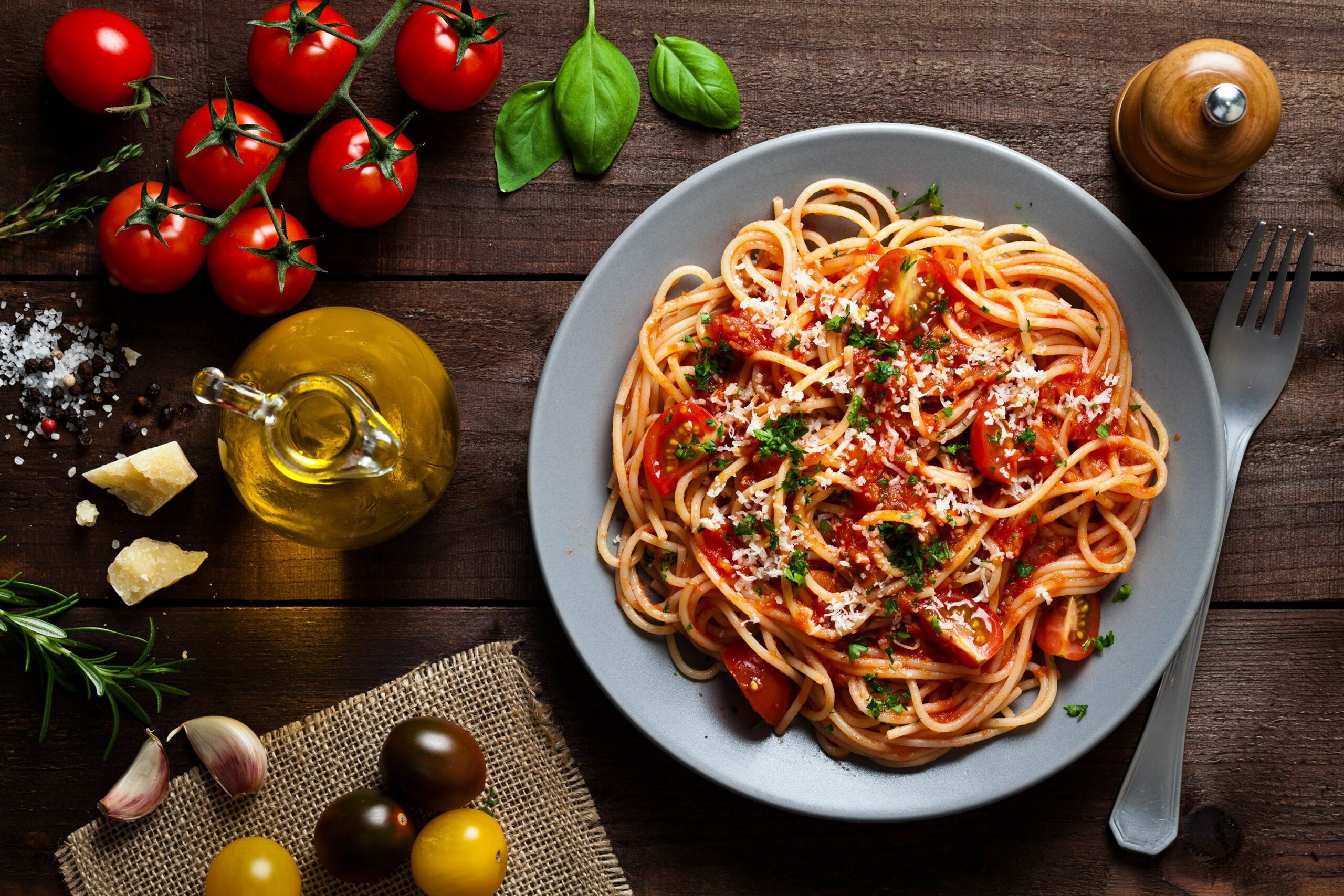
FAQs
Should You Rinse Pasta?
Rinsing pasta is not necessary, and it can actually make the pasta less flavorful. Rinsing pasta will also remove any starches that have been coating the noodles, which can make them more difficult to stick together.
Should You Add Oil To Pasta Water?
Adding oil to pasta water is not necessary, and it can actually make the pasta less flavorful. Adding oil to pasta water can also prevent the sauce from sticking to the noodles.
Should You Add Salt To Pasta Water?
Yes, you should add salt to pasta water. The salt will help to season the pasta and make it more flavorful. It is important to wait until the water is boiling before adding the salt, as it will take longer for the salt to dissolve in cold water.
How Do You Properly Strain Pasta?
The best way to strain pasta is to use a colander. First, make sure that the colander is clean and dry. Then, simply place the pasta in the colander and allow the water to drain away. Once the water has drained away, shake the colander to remove any excess water from the pasta.
How Long Do You Need To Cook Zoodles?
Zoodles only need to be cooked for a few minutes. The exact amount of time will depend on how soft or firm you prefer your zucchini noodles.
What Is The Best Way To Store Zoodles?
The best way to store zoodles is in an airtight container in the refrigerator. Zoodles can also be frozen, but they may become mushy when thawed.
How Do You Reheat Zoodles?
The best way to reheat zucchini noodles is in a skillet over medium heat. Simply add the zoodles to the skillet and cook them until they are heated through.
Can you cook pasta in the microwave?
Yes, you can cook pasta in the microwave. The best way to do this is to cook the pasta in a microwave-safe bowl with some water. Cover the bowl and cook the pasta on high for about 5 minutes.
Is it better to bake or boil ziti?
It is better to bake ziti. Baking helps to keep the ziti from becoming mushy. Boiling can make the ziti more likely to fall apart.
What can I add to plain pasta?
There are a variety of things that you can add to plain pasta. One option is to add a variety of different herbs and spices to the pasta water. Another option is to cook the pasta in a flavored broth or sauce. Finally, you can also top your cooked pasta with a variety of different cheeses, meats, and vegetables.
Is it safe to eat dried pasta past its expiration date?
It is generally safe to eat dried pasta past its expiration date. However, the pasta may not be as fresh and may not have the same flavor.
How much spaghetti is one serving?
One serving of spaghetti is generally about two ounces. This is equivalent to about 56 grams or half a cup of cooked pasta.
Is it better to use fresh or frozen pasta?
It is better to use fresh pasta if you have the option. Fresh pasta generally has a better flavor and texture than frozen pasta. However, frozen pasta can be a good option if you are short on time.
What is the difference between penne and ziti?
The main difference between penne and ziti is the shape of the noodles. Penne noodles are tube-shaped, while ziti noodles are tubular with a hole in the center. Penne noodles are also usually smaller than ziti noodles.
What is the difference between spaghetti and linguine?
The main difference between spaghetti and linguine is the shape of the noodles. Spaghetti noodles are long and thin, while linguine noodles are flat and wide. Spaghetti noodles are also usually shorter than linguine noodles.
How do you make homemade pasta?
Homemade pasta is made by combining flour and water to form a dough. The dough is then rolled out into a thin sheet and cut into desired shapes. The pasta can then be cooked in boiling water.
What kind of pasta shape is good for 15 minutes of Cooking time?
Long noodles like spaghetti, linguine, and fettuccine are all good choices for a 15-minute cook time. The reason is that these pasta shapes have a large surface area, which allows them to absorb water quickly and cook evenly.
Learn More About Grilling
If you want to learn more about grilling, check out these other helpful resources!

